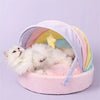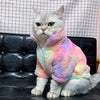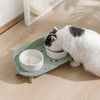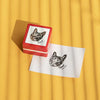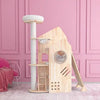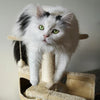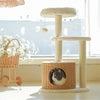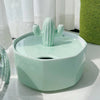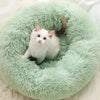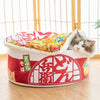Can Cats Eat Lettuce? A Scientific Perspective
Pet owners are consistently seeking healthier alternatives and supplements for their pets’ diets. Among the questions frequently asked is: can cats eat lettuce? While lettuce is a staple in many human diets due to its high water content and minimal calories, determining its safety and benefits for felines requires scientific insight. This article explores the nutritional composition of lettuce, potential benefits, risks, and best practices concerning feeding lettuce to cats.
Nutritional Composition of Lettuce: What Does It Offer?
Lettuce is composed of approximately 95% water, making it a hydrating vegetable with minimal caloric content. From a nutritional standpoint, lettuce contains small amounts of fiber, vitamin A, vitamin K, folate, and potassium. For humans, these nutrients contribute to various bodily functions, including vision, blood clotting, and cell growth. However, cats are obligate carnivores, which means that the majority of their nutrition must come from animal-based proteins and fats. Their digestive systems are not biologically designed to extract nutrients efficiently from plant-based materials.
That being said, a small amount of lettuce will not harm most cats. The negligible amount of nutrients in a typical serving makes it an insignificant source of vitamins or minerals for felines. However, its high fiber and water content may aid in digestion for some cats, particularly those experiencing mild constipation or hydration issues.
Health Benefits of Lettuce for Cats
While lettuce is not a necessary component in a cat’s diet, it can provide minor benefits when offered in moderation. Firstly, the fiber content might support intestinal motility. Some cats that groom themselves excessively suffer from hairballs, and the additional roughage from lettuce may aid in passing fur more smoothly through their gastrointestinal (GI) tract. Secondly, for indoor cats that lack access to cat grass or other plant material, lettuce may serve as a behavioral enrichment that simulates foraging or hunting.
Furthermore, because lettuce is non-toxic to cats, it can function as a low-calorie treat, especially for overweight cats that require restricted feeding. Allowing a few torn shreds of lettuce once in a while may satisfy cats that display food-driven behaviors without significantly increasing their caloric intake. Lastly, the texture and crunch of some lettuce varieties, particularly romaine, may be enjoyable for certain cats, encouraging sniffing, chewing, and paw interaction—all of which contribute to mental stimulation.
Potential Risks and Considerations
Despite being non-toxic, not all cats tolerate lettuce well. Some may experience digestive upset, such as vomiting or loose stools, particularly if they ingest large quantities. Introducing any new food item, even something as benign as lettuce, should be done cautiously. Start with a small amount and observe for any adverse reactions. Also, ensure that the lettuce is thoroughly washed to remove pesticides, bacteria, or dirt that could harm your cat.
Avoid feeding dressed or seasoned lettuce, as ingredients like onions, garlic, and dressings containing fats or additives can be toxic or irritating to cats. Icy cold lettuce from the refrigerator may also cause minor discomfort or reduced interest, so it’s ideal to allow it to reach room temperature before offering it.
Best Practices for Feeding Lettuce to Cats
If you choose to introduce lettuce into your cat’s routine, follow these scientific and veterinary-recommended guidelines:
- Use organic lettuce whenever possible to minimize chemical exposure.
- Wash all lettuce thoroughly to eliminate any pesticides or microbial contaminants.
- Offer only small portions—approximately a teaspoon of shredded leaves—no more than two to three times a week.
- Avoid iceberg lettuce, as it has even fewer nutrients and more water content, which provides minimal benefit and may cause digestive upset.
- Monitor your cat’s reaction and discontinue feeding if any signs of GI distress appear.
Conclusion: Is Lettuce Safe for Cats?
In scientific terms, lettuce is safe for cats when given in moderation. While it does not provide essential nutrients required in a feline-specific diet, it can offer hydration, fiber, and behavioral enrichment for some cats. Always remember that felines thrive on animal protein, and vegetables should remain an occasional treat—not a dietary staple. If you're introducing any new food, even something as simple as lettuce, consult your veterinarian first, especially if your cat has a pre-existing medical condition.
For cat owners seeking healthy treats or dietary variety, lettuce may be a harmless and refreshing occasional snack. Just remember to keep it clean, plain, and sparing. Your furry companion’s digestive system, after all, isn't quite the salad-loving type.



